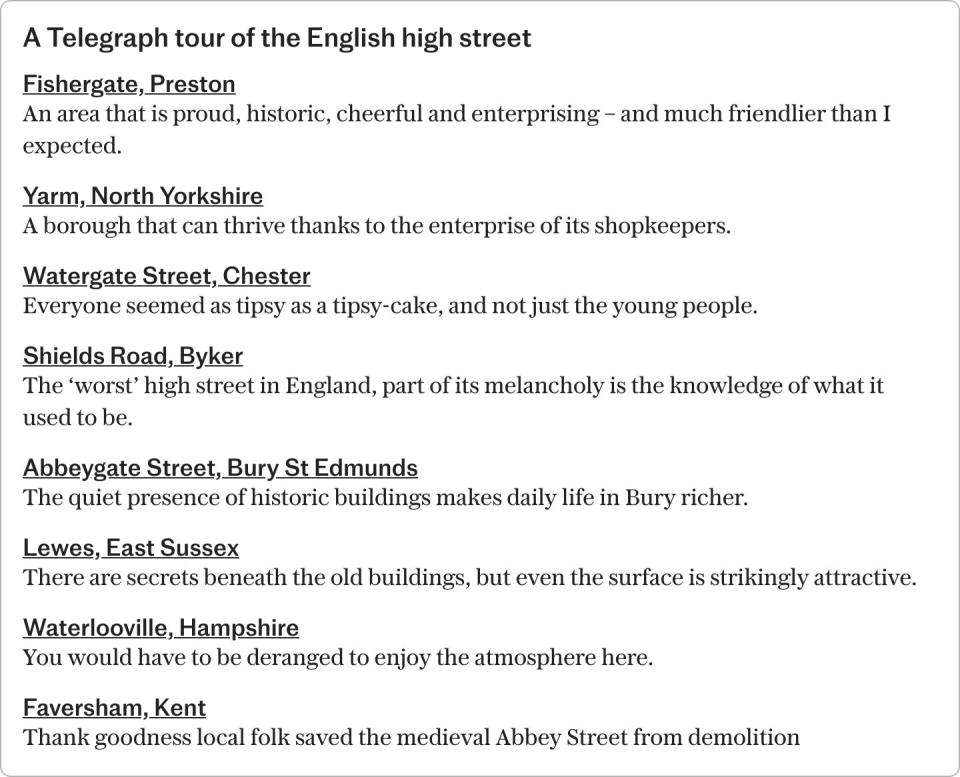Christopher Howse travels the country talking to locals about their high street. How it’s changed and what they miss… This week Christopher explores Marlborough in Wiltshire.
“Here’s a man of distinction,” said an old gentleman in a Panama hat who had been chatting to a friend – a retired colonel of the RAMC – on the sunny side of Marlborough High Street.
He meant me, because there is a good overlap between The Telegraph and Marlborough. And there is an overlap with Waitrose, more of which later – a key to the success of the high street here. I wish I had a hat too, to raise in response to the welcome.
“When the King was Prince of Wales,” the gentleman said, “he visited Marlborough and said, ‘There are no towns much better than this.’” It is absolutely true that he said that in 2004, and perhaps that judgment was true.
The exceptionally wide High Street was rebuilt after a great fire in 1653, and is very attractive. It follows a chalk strip for three furlongs along the slope above the River Kennet. Marlborough College stands on the site of the old castle at the western end.
A special feature of the High Street are the so-called pentices. A kind of verandah roof of tiles projects above the shop windows and doors. Columns, usually in the simple Doric style, support them and form a modest colonnade along the street, as in the Pantiles in Tunbridge Wells. Winchester also has a row of old houses called the Pentice.
In Marlborough, the pentices can provide ample shelter for small tables of coffee drinkers, or couples window-shopping. Pentices stand in front of the three-gabled 17th-century Merchant’s House, the town’s showpiece. The Pevsner Guide to Wiltshire calls it “exuberantly vernacular”. Oddly enough, one of the few empty shops on the street is the former Clarks shoe shop on the ground floor, now available to rent.
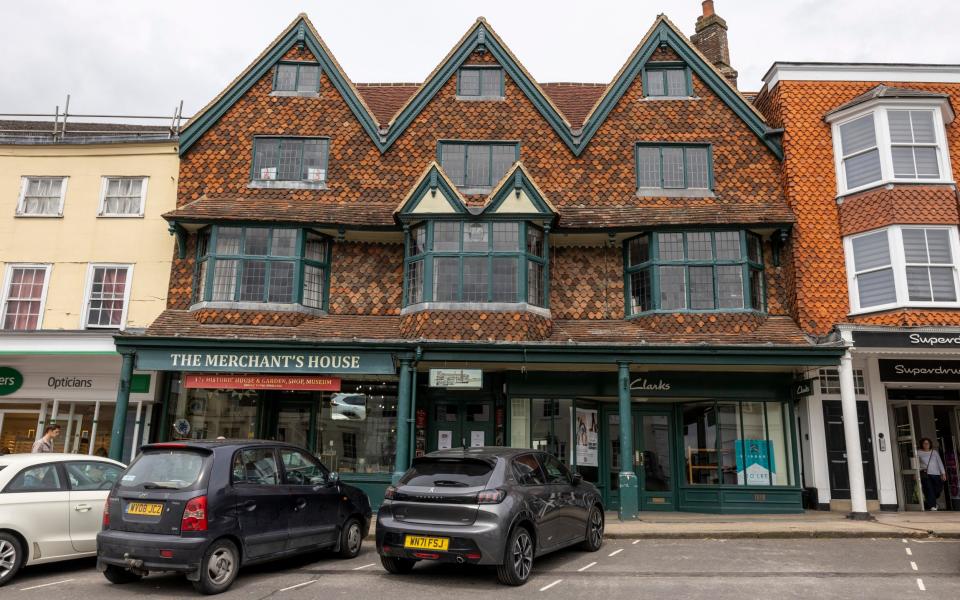
Right next to the town hall are two beautiful buildings, a clothing store and a coffee house. These not only have pillars, but also a series of Venetian windows on the first floor.
These windows are not quite as Sebastiano Serlio, the Renaissance architect, had envisaged. They have the same round window in the centre, flanked by a pair of square windows. But here the glazing bars of the central window intersect at the top to make a beautiful Gothic pattern. There are four of these Venetian windows in a row, the outer pair folded around a projecting bay. The effect is inventive and satisfying.
I am convinced that such beauty makes city life happier. More practically, the width of the street, which traditionally allowed for a large market, now allows for parking on both sides and in the middle. People can park here for a few minutes while they walk into a shop.
There is also parking at the back of Waitrose. The supermarket’s presence is not immediately apparent in the row of buildings on the south side of the street, as the entrance is in a stone building that looks Georgian. It was in fact built in the old-fashioned style in 1859 as the Corn Exchange by local grandee the Marquis of Ailesbury.
The grain exchange was in decline and in 1915 it was converted into a cinema, the Electric Picture Hall. The cinema closed in 1974. (Today the Parade Cinema flourishes in a handsome brick-fronted building on the High Street and, as well as new releases, shows relays from the National Theatre, Royal Opera House and Royal Ballet.)
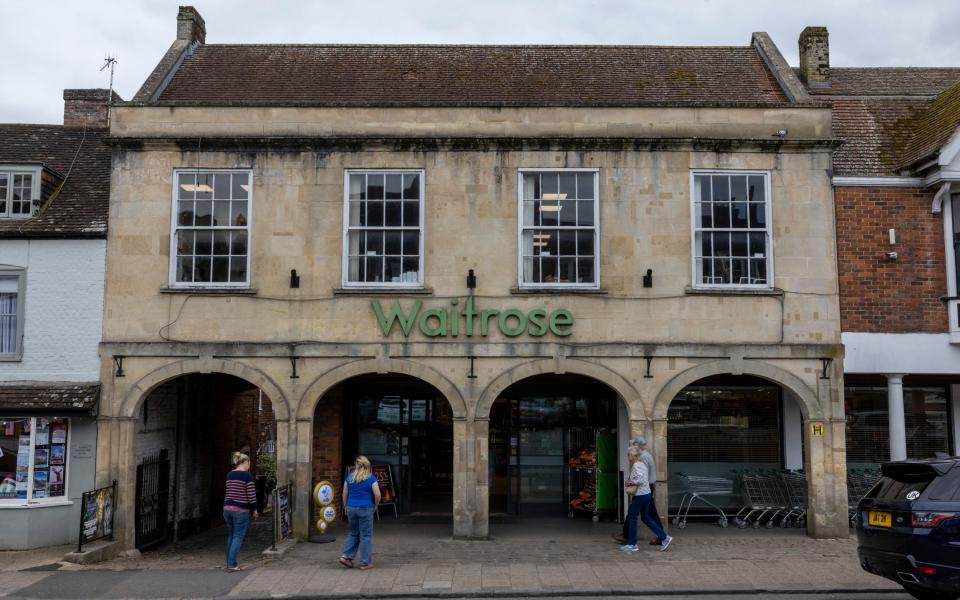

Waitrose was then able to build its supermarket and provide parking at the back inconspicuously, thanks to a decision made almost 1,000 years ago. The property along the High Street was owned under a Norman system called burgage tenure. The plots of land behind the houses were long and thin. This has allowed for infilling in recent decades, with some housing and the much-celebrated Waitrose.
When shoppers come to town to use the supermarket, they also use other shops. Tesco, on the other side of the river, is less likely to benefit the High Street by footfall. Emma, the young woman behind the bar in the Green Dragon, goes to Waitrose for her weekly shop, reasoning that the quality makes it cheaper than Tesco.
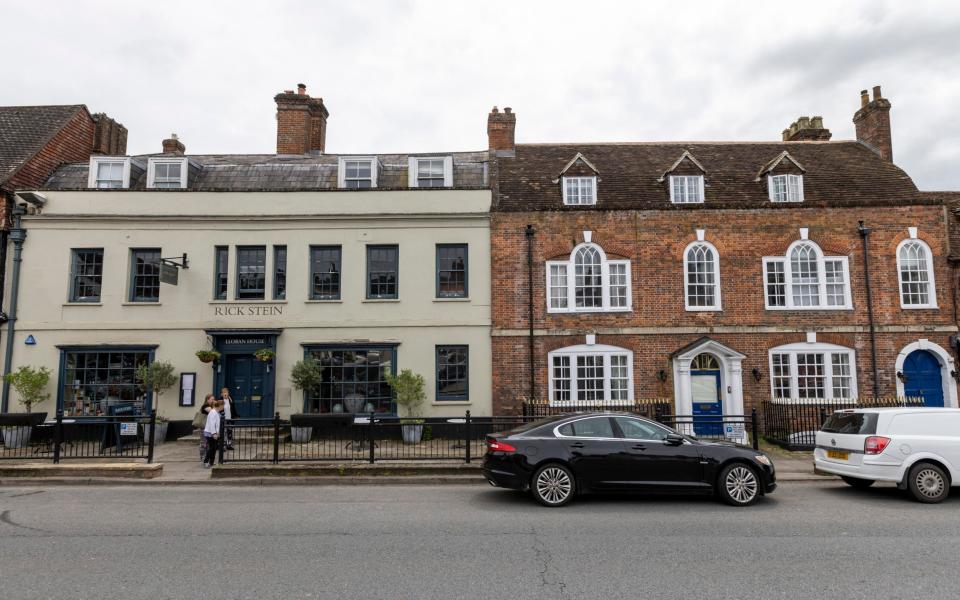

The High Street consists of a variety of pleasant old buildings in a local style. The most popular frontage is tiled, often with corrugated tiles. Some frontages are of brick, again in a local style, with the headers (the narrow end of the brick) in an ash grey and the trusses and window trim in soft red.
In fact, many of the frontages hide old half-timbered houses. Not all of them burned down in 1653. Behind the tiled gable of the White Horse Bookshop is a timber-framed Tudor building.
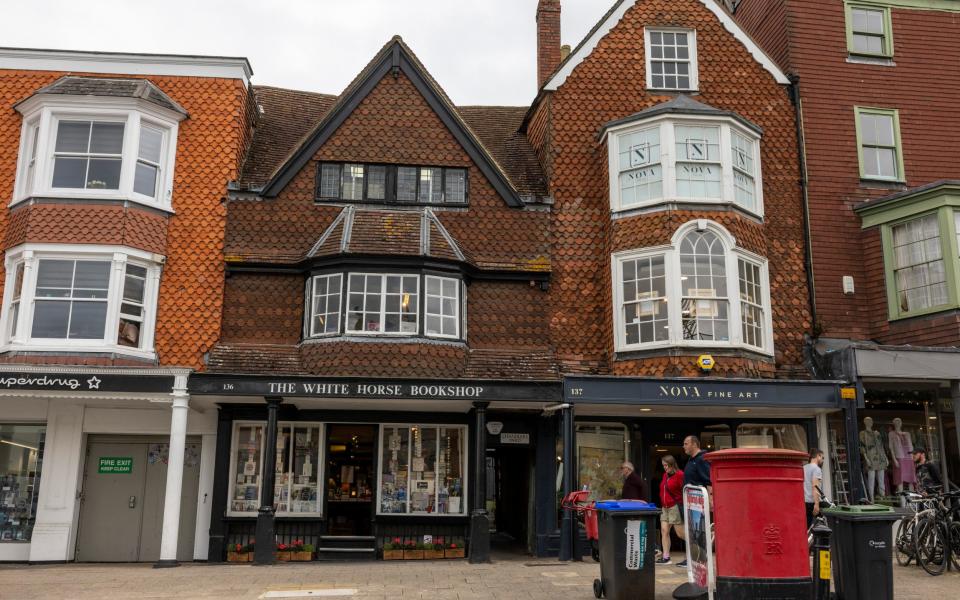

I went to the White Horse to buy some postcards. “Yes, we do accept cash,” the woman at the till said, laughing. “But we do have a problem. Lloyds Bank is closing. It’s the last bank in Marlborough, now that HSBC and Barclays are gone. I don’t know what we’ll do. Maybe the post office. But because no one is going to the bank, there will be fewer people walking past our door.”


My own pair of feet took me past the Norman church of St Mary’s at the east end of the High Street, behind the distinctly Edwardian Town Hall of 1902 (which is in such distinguished architectural company).
The church also burned down in 1653, but the skeleton survived, restored with post-fire elements such as neoclassical columns on the south side of the nave. You can still see fiery red Norman stonework.
Fires did not stop in 1653. The Polly Tearooms, where I had a rather generous slice of cake, has no upper floors because of one in 1966. Its neighbour was then rebuilt, in a gloomy, lumbering manner, to earn Pevsner’s disapproval as “the worst intrusion in the High Street”.
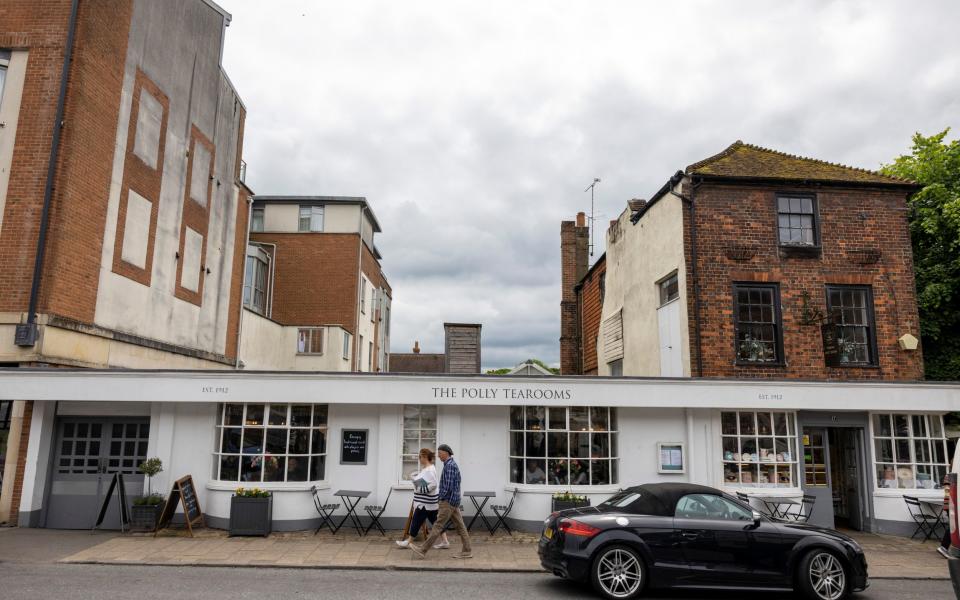

Beyond St Mary’s, London Road is an extension of the High Street that runs all the way to the bridge over the river. Here I found a wonderful old-fashioned butcher’s shop, Sumbler Bros, which has been around for over a century. “It’s the oldest shop in Marlborough that’s still going,” the green-aproned proprietor, Steve Frost, told me.
It is the kind of butcher who is on a first-name basis with the cattle that provide the cuts of meat. Half a dozen butchers were busy behind the long refrigerated counter with rows of sausages, red-brown pieces of stew meat, fat chickens, with ready-made pies and boiled ham, separated into their own refrigerated compartments.
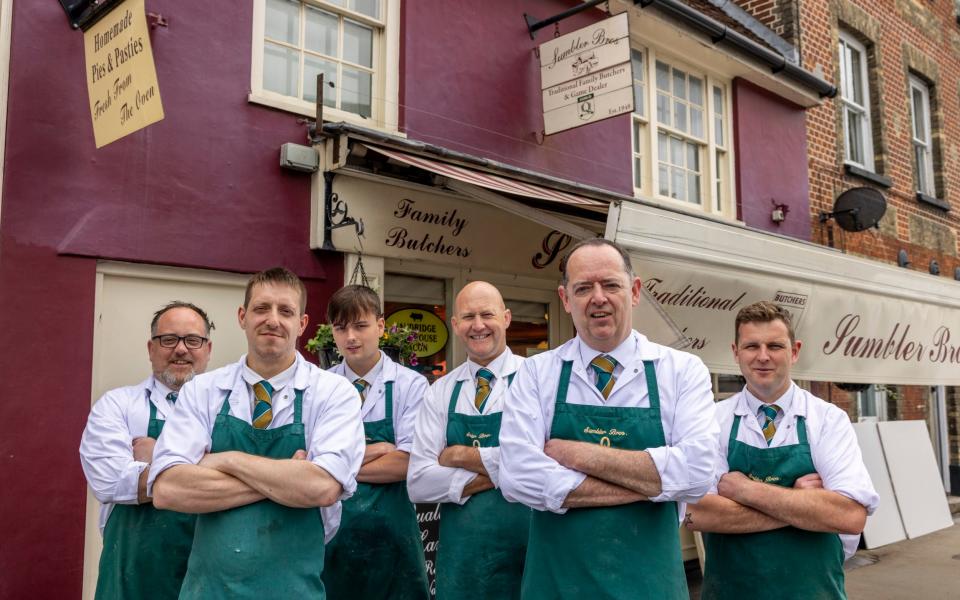

I could see that if you don’t like meat, this isn’t the place to be. But one woman was animatedly buying some vacuum-packed, flattened, marinated chicken for the weekend barbecue. “The kids love it.”
Next to Sumbler’s is a former pub, now flats, with a curious name: the Five Alls. The large sign that hung above the stable entrance showed a soldier (I fight for all), a priest (I pray for all), the king (I reign for all), a lawyer (I plead for all) and a farmer (I pay for all). Even the iron bar from which it hung is now gone, although the building is still listed as a building of special architectural and historical interest, as is most of the High Street.
Five Alls Court is the name of the stop where I waited for the bus back to Swindon, Marlborough station having closed in 1961. Traffic was light, even though this is a through route. The M4, a few miles away, is the east-west artery.
As the bus raced over the potholes in the straight, winding road, I thought about how fortunate Marlborough is to have such a historic, prosperous and well-preserved history.
The English have little idea of its age. At Marlborough College the Mound was thought to be a Norman castle motte (or, colloquially, Merlin’s tomb). Archaeologists now date it to 2400 BC and it is the second largest Neolithic mound in Europe after Silbury Hill.
Before the recent planning laws, no one forced the owners of old buildings like Marlborough to keep them. They thrived as part of a local culture of following in the footsteps of their fathers and emulating the fashionably desirable. Hence the pentices, tile-hung and Venetian windows. More of these, and fewer generic, rootless, undesirable shopping centres and apartment blocks would do us all good.
